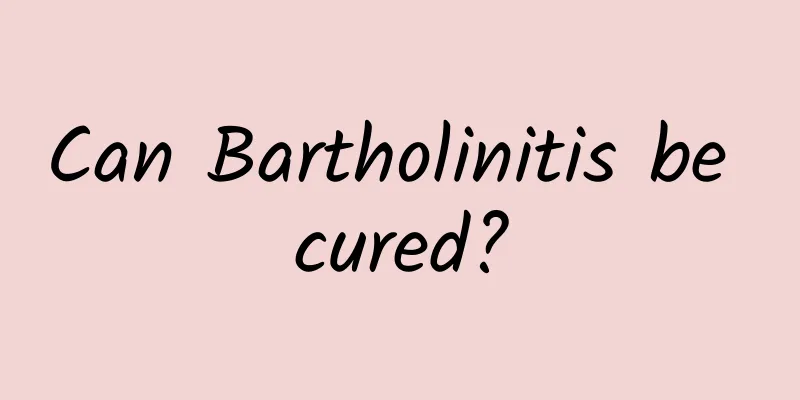Why do I get leukoplakia after childbirth? Why do I get gynecological inflammation after childbirth?

|
Postpartum is an important stage in a woman's physiological cycle, and some gynecological problems that follow often plague mothers. Two common problems are vulvar leukoplakia and gynecological inflammation. In order to understand the causes of these two problems, we need to conduct an in-depth analysis of the background and related factors. 1. Causes of vulvar leukoplakia 1. Endocrine disorders: The endocrine system of postpartum women is prone to certain disorders. The occurrence of postpartum vulvar leukoplakia is related to insufficient secretion of estrogen. The decline in estrogen levels can cause skin pigmentation in the vulva, which in turn forms white spots. 2. Decreased immune function: The body's immune system will be weakened after childbirth, which is also one of the causes of vulvar leukoplakia. Pathogenic microorganisms can more easily invade the vulva under the resistance of the immune system, causing the formation of spots. 3. Lack of vitamins and malnutrition: Postpartum women often lack multiple vitamins and nutrients due to the accelerated metabolism and the need for breastfeeding. Vitamin deficiency can affect the metabolic function of skin cells and easily lead to the occurrence of white spots. 2. Causes of gynecological inflammation 1. Postpartum wound infection: During childbirth, the vulva and vagina will be damaged and torn to a certain extent. If the wound is not treated and disinfected in time, it is easy to be infected with bacteria or viruses, leading to gynecological inflammation. 2. Improper protective measures: During the postpartum recovery period, women tend to neglect personal hygiene because they need to take care of their babies. If sanitary napkins are not changed in time or the hygiene is not done properly, it will cause bacteria to grow in the private parts and increase the risk of gynecological inflammation. 3. Low immunity: Due to physical weakness and decreased resistance after childbirth, the immune system's ability to fight pathogens is weakened, which can easily cause gynecological inflammation. It should be noted that everyone's physical condition and resistance are different, and the causes of postpartum vulvar leukoplakia and gynecological inflammation may vary from person to person. Therefore, you should maintain good hygiene habits after childbirth, pay attention to adequate rest and proper nutritional supplements. If related problems occur, you should seek medical attention in time and receive professional treatment. In short, the causes of postpartum vulvar leukoplakia and gynecological inflammation are multifaceted, involving multiple factors such as endocrine, immunity, nutrition, etc. Only by understanding these factors and taking corresponding prevention and treatment measures in time can we effectively prevent and reduce the occurrence of postpartum gynecological problems. |
<<: When is the best time for medical abortion? How many days does medical abortion usually last?
Recommend
If you want to lose weight in spring, you must eat mushroom and vegetable soup! Nutritionist Zhao Hanying shares her slimming secret soup
Spring is the season for the body to "warm u...
In daily life, what kind of care should be paid attention to for adnexitis
Adnexitis is one of the most common gynecological...
What are the causes of uterine fibroids?
Uterine fibroids are a common gynecological disea...
What can I eat after uterine fibroid surgery? Dietary care methods after uterine fibroid surgery
According to hospital experts, after uterine fibr...
2 types of vaginitis caused by improper dressing
When it comes to vaginitis, people often associat...
Does eating spicy food increase the risk of uterine fibroids? What should people with uterine fibroids not eat?
According to traditional Chinese medicine, uterin...
How to treat irregular menstruation? Women with irregular menstruation should treat it like this
Menstruation is something that every woman should...
What adverse symptoms will irregular menstruation cause to women?
Although irregular menstruation is a common sympt...
How is cervicitis usually treated?
Cervicitis is one of the common gynecological dis...
Symptoms of pelvic effusion during lactation
Symptoms of pelvic effusion during lactation: 42 ...
Pay attention to preventing cervicitis during sex in spring
MicrosoftInternetExplorer402DocumentNotSpecified7....
Relieve constipation and help lose weight, here’s the ranking of high-fiber foods! Nutritionist Zhang Peirong recommends 5 must-eat foods
High-fiber foods have many benefits! Did you know...
Does abortion have an effect on adenomyosis?
Adenomyosis is a common gynecological disease. Ma...
Which is more harmful to the body, medical abortion or surgical abortion? Two common problems after medical abortion
Giving birth is a very happy thing for women, but...
Can pelvic inflammatory disease cause constipation?
Modern women have to balance work and take care o...









